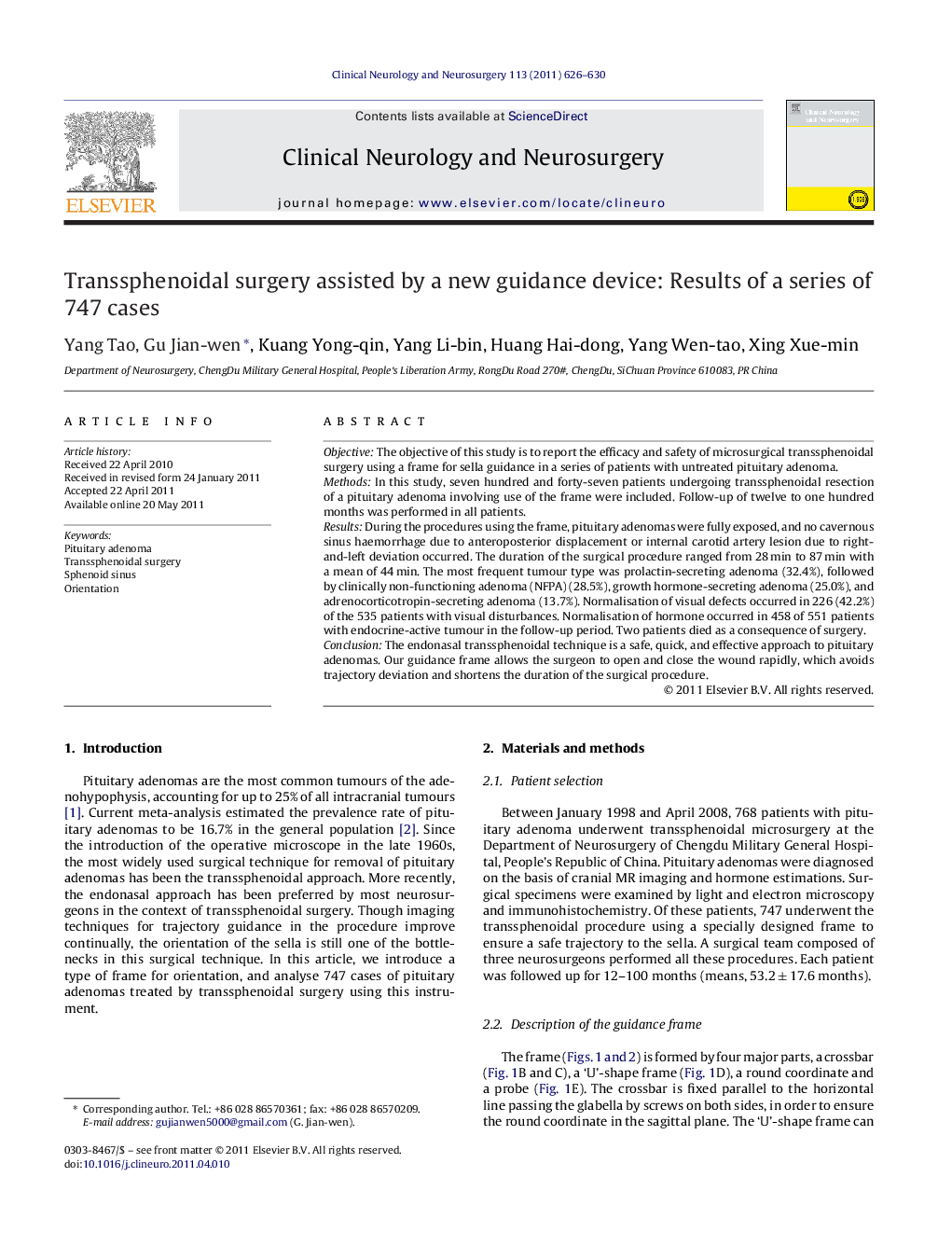| Article ID | Journal | Published Year | Pages | File Type |
|---|---|---|---|---|
| 3041017 | Clinical Neurology and Neurosurgery | 2011 | 5 Pages |
ObjectiveThe objective of this study is to report the efficacy and safety of microsurgical transsphenoidal surgery using a frame for sella guidance in a series of patients with untreated pituitary adenoma.MethodsIn this study, seven hundred and forty-seven patients undergoing transsphenoidal resection of a pituitary adenoma involving use of the frame were included. Follow-up of twelve to one hundred months was performed in all patients.ResultsDuring the procedures using the frame, pituitary adenomas were fully exposed, and no cavernous sinus haemorrhage due to anteroposterior displacement or internal carotid artery lesion due to right-and-left deviation occurred. The duration of the surgical procedure ranged from 28 min to 87 min with a mean of 44 min. The most frequent tumour type was prolactin-secreting adenoma (32.4%), followed by clinically non-functioning adenoma (NFPA) (28.5%), growth hormone-secreting adenoma (25.0%), and adrenocorticotropin-secreting adenoma (13.7%). Normalisation of visual defects occurred in 226 (42.2%) of the 535 patients with visual disturbances. Normalisation of hormone occurred in 458 of 551 patients with endocrine-active tumour in the follow-up period. Two patients died as a consequence of surgery.ConclusionThe endonasal transsphenoidal technique is a safe, quick, and effective approach to pituitary adenomas. Our guidance frame allows the surgeon to open and close the wound rapidly, which avoids trajectory deviation and shortens the duration of the surgical procedure.
